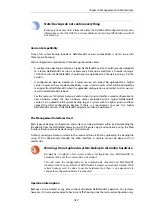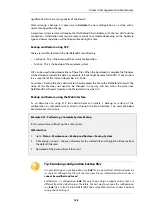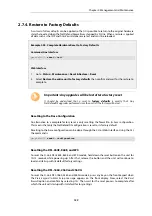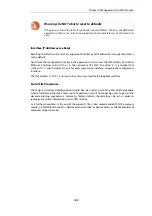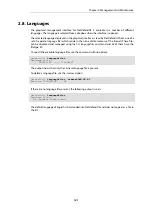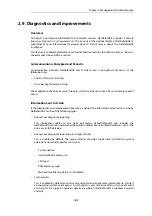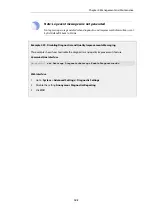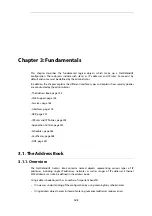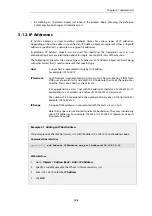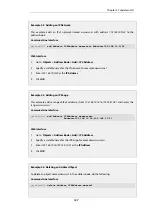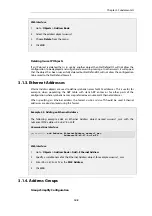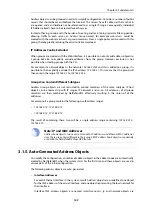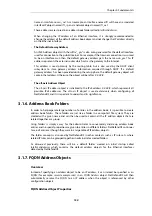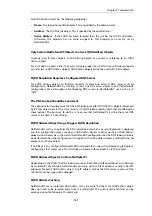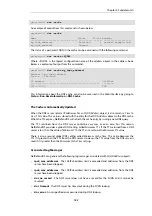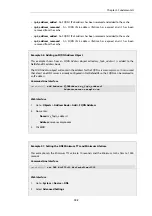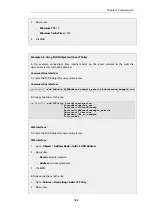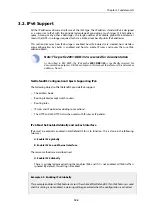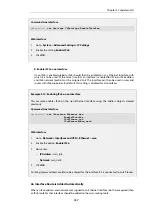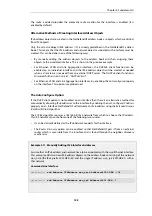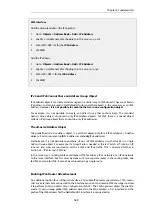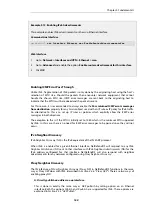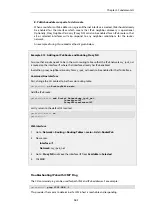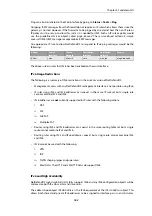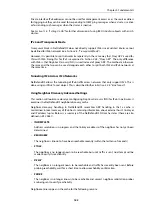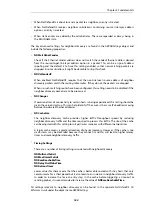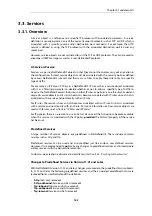
named
<interface-name>_net
. As an example, an interface named
If1
will have an associated
interface IP object named
If1_ip
, and a network object named
If1_net
.
These addresses are stored in an address book folder called
InterfaceAddresses
.
When changing the IP address of an Ethernet interface, it is strongly recommended to
change the address of the default address book object and not change the IP address directly
on the Ethernet interface.
•
The Default Gateway Address
An IPv4 Address object with the suffix "
_gw
" is also auto-generated for the default interface
used for connection to the public Internet. For example, if the Internet connection is assumed
to be on interface
wan
then the default gateway address gets the name
wan_gw
. This IP
address represents the external router which acts as the gateway to the Internet.
This address is used primarily by the routing table, but is also used by the DHCP client
subsystem to store gateway address information acquired through DHCP. If a default
gateway address has been provided during the setup phase, the default gateway object will
contain that address. Otherwise, the object will be left as
0.0.0.0/0
.
•
The all-nets Address Object
The
all-nets
IP address object is initialized to the IPv4 address
0.0.0.0/0
, which represents all
possible IPv4 addresses. The
all-nets
IP object is used extensively when configuring of
NetDefendOS and it is important to understand its significance.
3.1.6. Address Book Folders
In order to help organize large numbers of entries in the address book, it is possible to create
address book
folders
. These folders are just like a folder in a computer's file system. They are
created with a given name and can then be used to contain all the IP address objects that are
related together as a group.
Using folders is simply a way for the administrator to conveniently divide up address book
entries and no special properties are given to entries in different folders. NetDefendOS continues
to see all entries as though they were in a large table of IP address objects.
The folder concept is also used by NetDefendOS in other contexts such as IP rule sets, where
related IP rules can be grouped together in administrator created folders.
As discussed previously, there will be a default folder created on initial startup called
InterfaceAddresses
which contains the default address objects for the Ethernet interfaces
detected by NetDefendOS.
3.1.7. FQDN Address Objects
Overview
Instead of specifying an address object to be an IP address, it can instead be specified as an
FQDN (for example:
server1.example.com)
in an
FQDN Address
object. NetDefendOS will then
automatically resolve the FQDN to an IP address when the object is referenced by other
configuration objects.
FQDN Address Object Properties
Chapter 3: Fundamentals
150
Summary of Contents for NetDefendOS
Page 30: ...Figure 1 3 Packet Flow Schematic Part III Chapter 1 NetDefendOS Overview 30 ...
Page 32: ...Chapter 1 NetDefendOS Overview 32 ...
Page 144: ...Chapter 2 Management and Maintenance 144 ...
Page 284: ...Chapter 3 Fundamentals 284 ...
Page 392: ...Chapter 4 Routing 392 ...
Page 419: ... Host 2001 DB8 1 MAC 00 90 12 13 14 15 5 Click OK Chapter 5 DHCP Services 419 ...
Page 420: ...Chapter 5 DHCP Services 420 ...
Page 573: ...Chapter 6 Security Mechanisms 573 ...
Page 607: ...Chapter 7 Address Translation 607 ...
Page 666: ...Chapter 8 User Authentication 666 ...
Page 775: ...Chapter 9 VPN 775 ...
Page 819: ...Chapter 10 Traffic Management 819 ...
Page 842: ...Chapter 11 High Availability 842 ...
Page 866: ...Default Enabled Chapter 13 Advanced Settings 866 ...
Page 879: ...Chapter 13 Advanced Settings 879 ...


